How to Freshen Up Your Outdoor Space Using Natural Stone
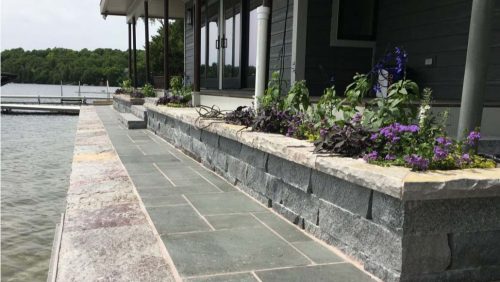
If you’re thinking of updating your outdoor space, you’re not alone. As many of us are traveling less and spending more time at home, our outdoor spaces are becoming a refuge—and many people are realizing that these spaces need some love.
Tiffany Koss, director of sales and marketing for Kafka Granite, a company that carries over 60 colors and styles of specially-crushed natural stone for manufacturing, architecture, and landscaping use, is finding that many clients are realizing that their outdoor space is one of their largest home assets.
“We’re finding that people are kind of shifting the way that they’re using their money,” Koss says. “People are in their homes and, for the first time in a long time, they’ve slowed down. They’re working from home or not traveling and confined to their home. They’re thinking, ‘Oh, now this would be the time to do these things.’.”
Using natural stone can be a great way to add interest and functionality to a project. Here are some budget-friendly ways to help make your outdoor space your new happy place and an oasis during any time of the year.
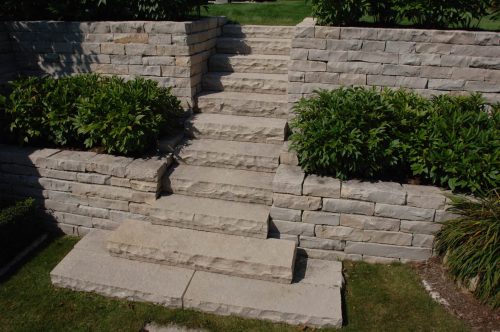
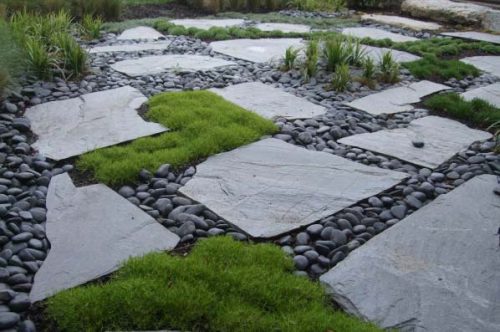
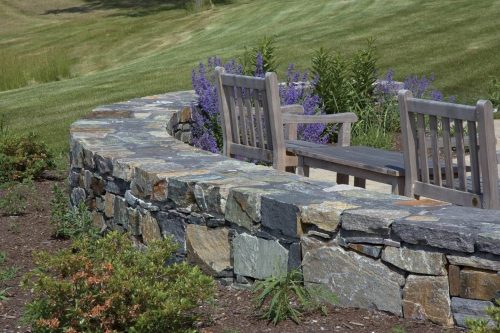
Natural Stone Design Ideas and Long-Term Investments
Your imagination is the only limit when it comes to designing outdoor spaces using natural stone. Garden walls, firepits, stepping stones, pathways, and seat walls are just a few ways natural stone can be used outdoors.
Natural stone can also be used for functional purposes. For example, a large boulder as a landscape element can provide play opportunities for children, but it can also provide security or act as a physical deterrent to keep vehicles away from the landscape. “In all of these scenarios, natural stone will outperform other materials so one needs to look at it from a life cycle performance perspective, not to mention what it will add to the property’s resale value as compared to a fake product,” says Daniel Wood, natural stone and material consultant with Lurvey Supply.
Koss agrees that the list of how to use natural stone outdoors is long and will vary based on each homeowner’s interest and needs. Like Wood, one thing she stresses is to think of natural stone as a long-term investment, rather than focusing on the initial cost of the product. “When you compare natural stone to alternative products, such as making the choice to use something as simple as decorative stone versus mulch for ground cover, decorative stone has to be replaced far less frequently,” says Koss. Natural stone, including natural thin stone veneer, will last much longer than a cultured stone product, which might be susceptible to fading or discoloration due to its dyes and pigments.
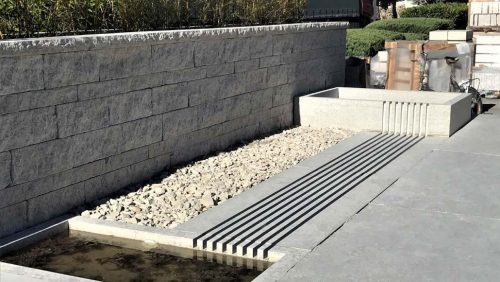
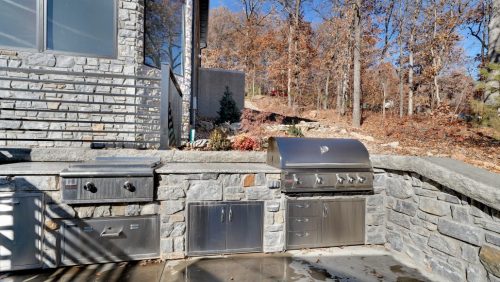
Start Projects Small and Build Upon Them
Outdoor projects can be done in stages to help make them more financially accessible. Rather than think you need you need to do a complete overhaul this season, it may make sense to do things in phases.
To help make an outdoor project using natural stone more budget-friendly, consider working with a landscape architect or designer to develop a comprehensive plan of what the landscape will ultimately look like when completed.
“A major benefit of working with a professional, whether it’s a landscape architect or a professional landscape contractor who design builds, is the project can be visualized but you can make sure things will done correctly from a structural endpoint,” says Koss. This means that you won’t have to worry about things like proper water management or project failures.
Professionals can also help determine the cost of implementing the plan, whether you choose to do everything at once or in phases. “At the end, they will have a landscape that will be beautiful and functional instead of one that may look piecemealed over time, will look cohesive, visually attractive and functional and easy to maintain,” adds Wood.
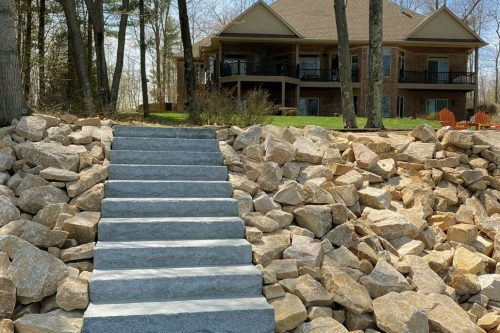
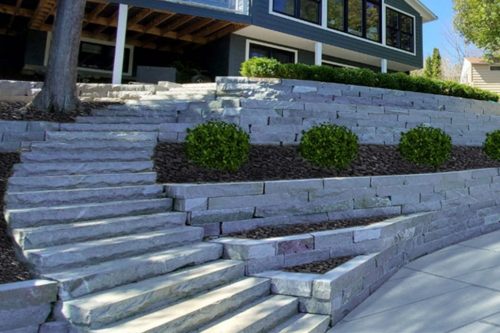
Natural Stone is a Sustainable Choice
Natural stone will stand the test of time. It is recyclable and can often be locally sourced. It has one of the lowest carbon footprints for materials in the built environment, and very little has to be done to it to make it usable. “If you want to play your role in reducing our impact on the planet and make good material choices that help with that, then use natural stone wherever you can,” says Wood.
Don’t think you’ll have options regarding color, sizes, or cost? Think again. “There are more new stone options available in a variety of materials, colors and surface textures, cost effective options, and lighter colors for cooler surfaces,” adds Wood.
As more homeowners become socially-conscious about their material choices, the industry is responding by making information more transparent. Those interested in where to find certified natural stone that meets the Natural Stone Council’s sustainability standards should visit the Natural Stone Council’s Sustainability resources page online.
Don’t Be Fooled by Fake Stone
There is a misconception that natural stone is expensive, but this is not always the case. Often it is less expensive than manmade alternatives. The cost will depend on your design goals.
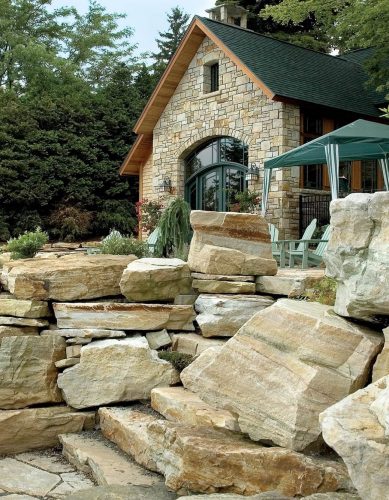
Wood recommends designing natural stone to the standard sizes and dimensions that it is produced to if budget is a concern. Custom work takes more time to produce, causing project costs to increase.
“In some cases, natural stone can be less expensive than concrete products for paving or veneer applications,” says Wood. “Then there are various cuts of natural stone that can be more affordable than alternative products as well.”
Many operations offer smaller scale options made from production remnants that are less expensive and demonstrate the industry’s commitment to green and sustainable production methods.
Natural stone has time on its side. Unlike other products that might deteriorate over time, natural stone can’t be beat when it comes to comparing long term performance, maintenance, and reusability.
حسین حردانی پور
21 November 2020

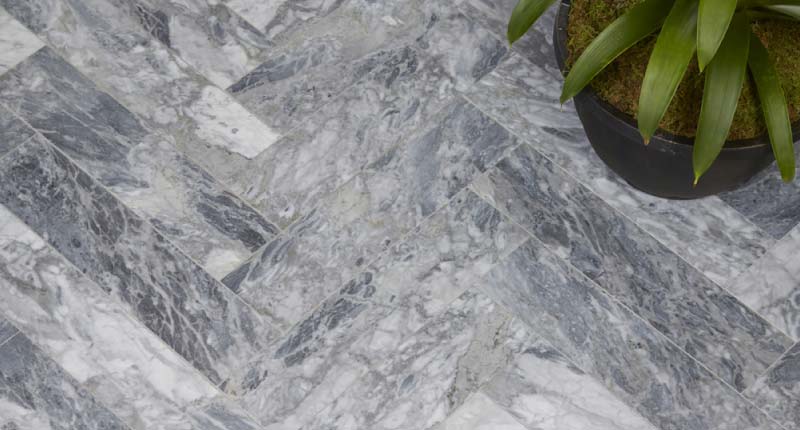
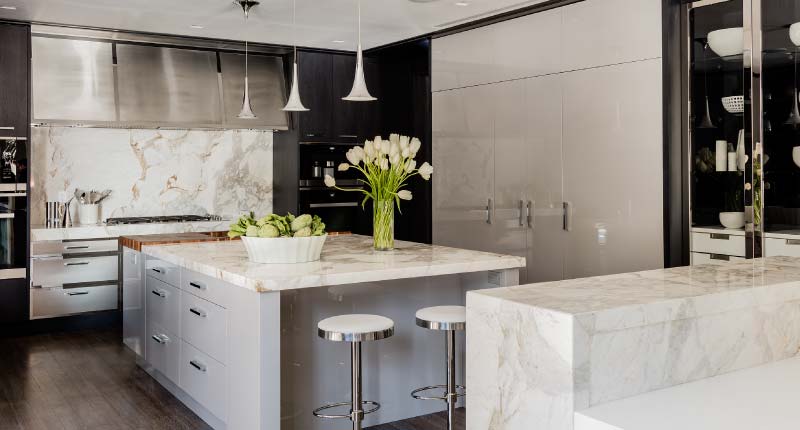
هنوز هیچ دیدگاهی ثبت نشده